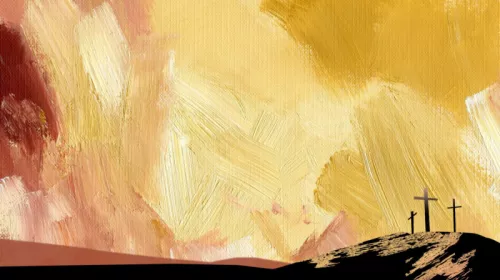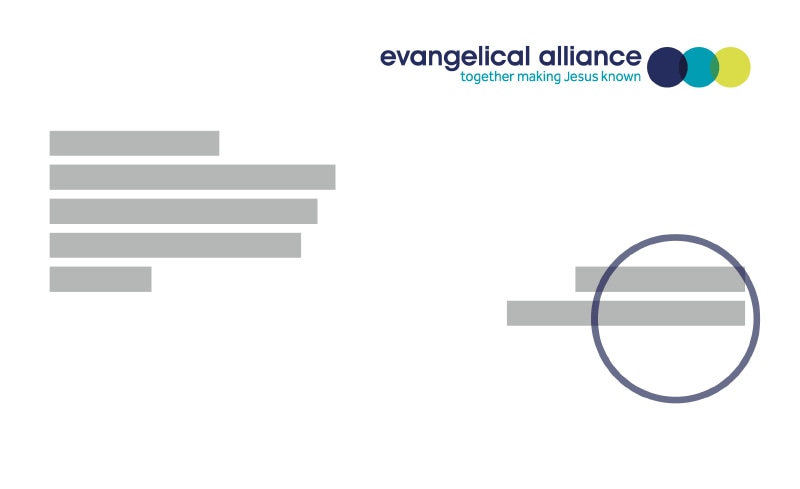This Easter, let’s explore the gospel story afresh.
This reflective meditation includes the repeated prayer, “Come Lord Jesus, ‘Easter’ us anew”, inspired by the prayers of theologian Walter Breuggemann. It expresses a longing for the ongoing renewal and restoration of our daily human lives that is possible because of the first Easter event. It’s about pursuing an empowered way of living in our world, as our transformed lives take the shape of His death and resurrection in our everyday places and spaces…
Picturing the Easter story – Lion in a Lamb
In Revelation 5, all of heaven is desperate for someone, anyone to “open the scroll” that unleashes God’s plan of salvation for the cosmos. Human beings had imploded God’s creative design for them to hold dominion over His creation. Someone, anyone who was worthy of the task, could not be found. In “all of heaven and earth and under the earth, no one is able”. Not one human person.
For this desperate state of affairs, John weeps, loudly (v5). “Weep no more, John – Look!” Here is One! Not just anyone, “the Lion of the tribe of Judah, the Root of David”. He is able, He is worthy. “He has conquered so that He can open the scroll and the seven seals” (v5).
And so, anticipating the mighty, conquering Messianic figure, John looks centre stage “and saw a Lamb, standing, with the marks of slaughter on it” (v6). What John hears is the announcement of a Messianic triumphant lion. What John sees is a scarred, bloodstained, vulnerable Lamb. There is an audio-visual disconnect.
Come, Lord Jesus, and Easter us anew! We want to know Christ, and the power of His resurrection – here, as we share in the fellowship of His suffering – now.
The paradox of the Easter story
This is a breath-taking, baffling moment for John, for the heavenly realms and for the readers of this revelation throughout time. Can these promised words of strength and victory, and the pitiful, vulnerable object of heaven’s gaze belong together? Through the fusion of these two paradoxical, contrasting images, God reveals and redefines His kingly character and kingdom plan to the heavens and earth. The kingdom will come, the King will overcome, not through human strength and power, but through the human suffering and death of Jesus the Lamb, and those who witness to the Lamb-like way of His kingdom.
As J P Love says, “When earth-bound men want symbols of power they conjur up mighty beasts and birds of prey. Russia elevates the bear, Britain the lion, France the tiger, the United States the spread eagle – all of them ravenous. It is only the Kingdom of heaven that would dare use as its might, not the Lion for which John was looking, but the helpless Lamb, and at that, a slain Lamb.”
This central symbol of the kingdom tells the paradoxical points of the Easter story. The Lamb who conquers in place of a Lion; Friday’s dark night turns to Sunday’s bright morning; obedience to death becomes the breakthrough of life; the self-emptying humility of one becomes the triumphant exaltation of others.
This cross-shaped paradox of power that is central to the Easter story has been resisted by humanity across time. The Easter symbol of a self-emptying, crucified, Lamb-like King was a “stumbling block to the Jews and foolishness to the Gentiles” (1 Corinthians 1:23) in the first century context. The Easter symbol of a self-emptying, crucified, Lamb-like king is an oppressed oddity in a 21st century context, where self-determination, self-agency, self-representation, and self-empowerment are celebrated.
More uncomfortably for us, the western church so steeped in Christendom tends to remake Christ in our empire-loving image. The Easter symbol of our self-emptying, crucified, Lamb-like King has too often become more of a transactional, doctrinal belief, and less of a cross-shaped, self-emptying and transformed way of life.
Come, Lord Jesus, and Easter us anew! We want to know Christ, and the power of His resurrection – here, as we share in the fellowship of His suffering – now.
Participating in the Easter story
The Easter story that centres on a self-emptying, crucified Lamb-like King offers us not only a transaction (His death for our life) for future judgement. This self-emptying, crucified Lamb-like King offers us a whole-person transformation (from death to life), which we participate in with our whole human selves, here and now.
The Easter story confronts us as more than a historical fact to believe in, and a theological doctrine to agree with… but as a compelling invitation to adopt a new way of being human, and being human together in this world.
The Easter services we attend, hymns we sing and texts we read will retell and remember the death and resurrection of Jesus that took place in that time, that place… but they also train us to reform our daily lives and to realign our relationships into the death and resurrection of Jesus, in our time, our place.
The Easter image of a Lamb whose obedient act of self-emptying humiliation unleashed the life-giving exaltation of others… inspires us that the crucified, risen King was not just the source of our life in His kingdom, but must be the shape of our lives in the way of His kingdom.
Come, Lord Jesus, and Easter us anew! We want to know Christ, and the power of His resurrection – here, as we share in the fellowship of His suffering – now.
Public-ising the Easter story
When we participate in the Easter story, everything changes!
Our Easter celebration is so deeply personal, but it is never private. The Easter story of the King’s death and resurrection was a lived public reality 2,000 years ago, and is a lived public reality, here and now, through our faithful witness to the Lamb-like King and the Lamb-like way of His kingdom.
In Christ, everything we are and have has been reformed into the Easter story, shaped by His death and resurrection. That is, our whole personhood, every aspect of our lived human experience has been crucified with Christ, and raised to walk in His new life (Ephesians 2:6, Colossians 3:1, Romans 6:4).
When our transformed Lamb-like lives tell the Easter story everyday, everywhere; when we witness to the power of His resurrection, through the fellowship of His suffering, we embody, we enact and we proclaim the Easter reality – Christ has died, Christ has risen, Christ will come again!
This radical and real Lamb-like power is lived out in the lives of individuals and faith communities who become faithful witnesses to the Lamb. They empty themselves, set their face towards their Jerusalem, weep the tears of their Gethsemane, take up their rugged cross, and spend their lives on their Golgotha hill for the Easter-ed restoration and renewal of the world.
Faithful witnesses to the Lamb-King have ears to hear and eyes to see that the kingdom of our Lord and King is not of this world, does not resemble this world, and runs completely counter to this world.
Faithful witnesses to the Lamb-King experience that His power is made perfect in our weakness (2 Corinthians 12:9), and recognise that throughout the story of God, He chose the most unlikely human beings to work through, in His power.
Faithful witnesses to the Lamb-King resist the human default to seek the rights of me, myself, and my own over others. They refuse to succumb to human wisdom that mistakes empire for kingdom, and confuses domination over dominion. They forgive enemies, and pray for those who persecute them. They go the extra mile, preferring the needs of others before their own.
Faithful witnesses to the Lamb-King overcome this increasingly hostile world shaped in the Easter story, “by the blood of the Lamb, the word of their witness, and they did not love their lives so as to shy away from death” (Revelation 12:7).
Faithful witnesses to the Lamb-King gaze on this Easter symbol of the slaughtered Lamb; He becomes the formational, transformational focus of their worship – their new kingdom allegiance – as they join in heaven’s song:
“Worthy is the Lamb who was slain, to receive power and wealth, wisdom and might, honour, glory and blessing” (Revelation 5:12).
Practice the Easter story – here and now
As you enter this Easter season, do you want to know the power of His resurrection, in your own human life and experience, among the brokenness of our human communities, over the chaos of our human societies – resurrection power, here, in our time?
The Easter image of the Lamb-like King reminds us soberly this season, that the life-giving, liberating, Sunday morning experience of Easter only comes through the intentional practice of fellowship in His suffering – now, in and for our place.
The Easter celebration draws our whole human selves into His story, as reimaged faithful witnesses to the Lamb-like King and the Lamb-like power of His kingdom.
Do you want to know Christ, and the power of His resurrection in your human life experience – here?
Can you share in the fellowship of His suffering in your human life experience
– now?
Oh, come Lord Jesus, and Easter us anew!
Amen.
Come Lord Jesus.
Read related articles:

How to be a great friend: look at the Easter story
The world is in desperate need of good friendship. Phil Knox explores what the Easter story shows us about the kind of friends we are called to be Read more



